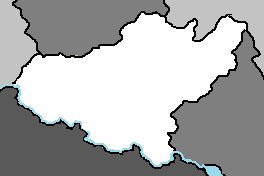Aybrea
United States of Aybrea Aĩ-Bĩyaa | |
|---|---|
|
Flag | |
 | |
| Capital | Ntunbe |
| Largest city | Litebbe |
| Official languages | Hasu |
| Demonym(s) | Aybrean |
| Government | |
| Aklilu Kaleyesus Teklile | |
| Population | |
• 2020 estimate | 10,289,000 |
| Date format | mm-dd-yyyy |
The United States of Aybrea, most commonly known as Aybrea, is a nation located in Adula, bordered to the north by Timeria and Cakala, to the south by Austrolis, and to the east by Kantoalina. The country has a population of 10.3 million. Its small geographic area presents variations in climate and population, ranging from vast forests, wildlife and fertile agricultural regions in the south to drier, less fertile arid and semi-arid plateau areas in the north. The capital is Ntunbe and the largest city is Litebbe. Aybrea was its own sovereign kingdom until it was conquered by the Julian Empire, and then traded hands between the Cakalan Empire and Austrolisian Kingdoms for the next millenia. It was a territory of Austrolis until peaceful independence was achieved in 1960. Aybrea is a presidential representative democratic republic, in which elected officials represent the people and the president, currently Aklilu Kaleyesus Teklile, is the head of state and government. Agriculture is the largest sector: tea and coffee are traditional cash crops, while fresh flowers are a fast-growing export. The service industry is also a major economic driver, particularly tourism. Aybrea is a member of the CCA, PADC, TAFCA, and CTO.
Etymology
The United States of Aybrea is named after Mount Aybrea. The earliest recorded version of the modern name was written by Quetanan explorer Daniel Vasconcelos in the 17th century. While travelling with a caravan, Aybrea spotted the mountain peak and asked what it was called. A guide with his caravan told him "Aĩ-Byaa" or "Aĩĩa- Bĩĩyaa", probably because the pattern of black rock and white snow on its peaks reminded him of the feathers of the male ostrich. In archaic Hasu the word 'Aybaa' is used to describe an extremely bright object. The Aiuyu, who inhabit the slopes of Mt. Aybrea, call it Aĩrĩa Aĩrĩnaa (literally 'the mountain with brightness') in Hasu, while the Ambu call it "Aibeaa". All three names have the same meaning. Vasconcelos recorded the mountain on a map as "Aybrea".

